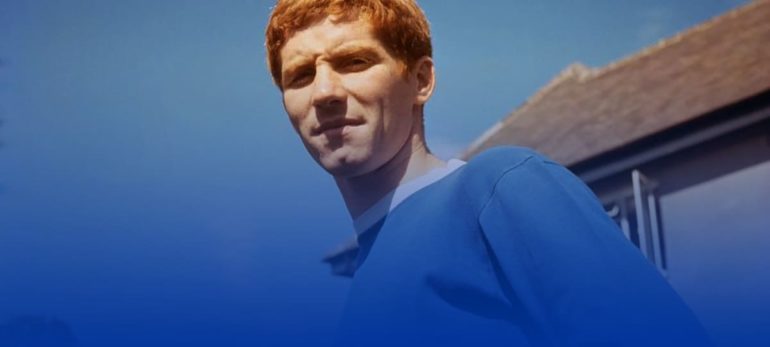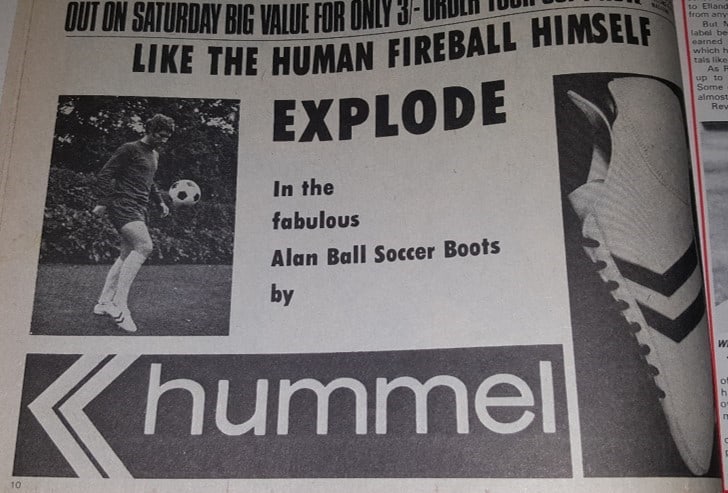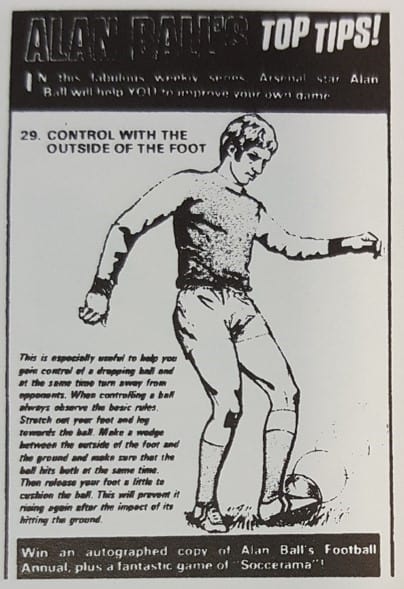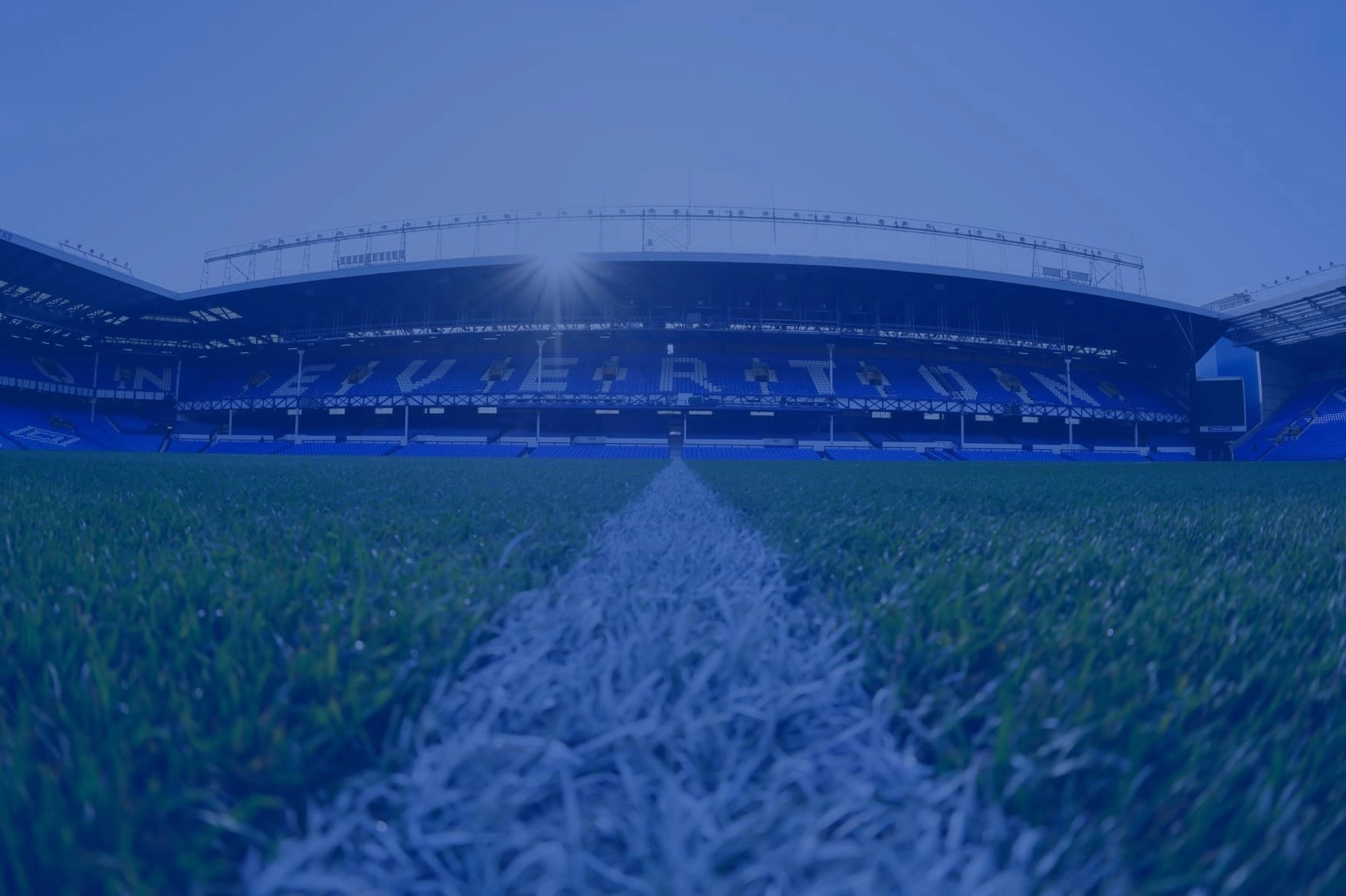The name of Alan Ball, made up of only eight letters, has become one of the biggest in British football. Indeed, it is a name that has to be considered when talking about the best players in the world. [Harry Catterick, 1969]
The start of the 1966-67 season was an exciting time for football in England and Liverpool. England had just won the 1966 Football World Cup; Liverpool were the Champions of England and Everton were the winners of the FA Cup. The traditional curtain raiser to each English Football season is the Charity Shield, were the League winners play the winners of the FA Cup. The game was played at Goodison Park and both teams could display what they had won the previous season, as well as the Jules Rimet trophy which was paraded by the members of the England Football Team, who also represented Liverpool and Everton. The game has been described by Dohren as a ‘symbolic coronation’ of a ‘footballing oligarchy’, ‘63,000 spectators’ watched this meeting of the two best sides in England, who were both from Merseyside.[1] Defining this match as a coronation of a footballing oligarchy seems rather over the top, especially for a game that is often deemed no more than a pre-season friendly. Nevertheless, this was a very proud day for Merseyside football which showcased the ability of both teams, as well as the friendship and rivalry between them. However, perhaps the best trophy to be displayed was to come a couple of weeks later with the new Everton player, Alan Ball.
Ball was also a member of the 1966 World Cup winning England squad and had attracted a lot of attention during the tournament. He was praised for his ‘capacity for work’, ‘hating to hear the final whistle’ and when Everton signed him he was already ‘an England veteran’, yet he still had an ‘explosive temperament’.[2] Everton already had reason to feel proud with their defender Ray Wilson playing in the final for England, now they had secured the signing of the exciting, young Alan Ball. Ball was ‘just 23 and one of football’s hottest properties with that World Cup success already under his belt’.[3] The transfer ‘broke all records for dealings between British clubs’ and the arrival of Ball marked an exciting period for Everton.[4]
Catterick and Ball had a strong relationship during their time working together at Everton FC. Catterick had faced competition in signing Ball but once he and his Dad had met Catterick his decision was made. Ball said, “I was joining a massive club; my wages were more than I had ever imagined”, which again illustrates the financial power of Everton and the ability of Ball for him to be paid so highly.[5] Ball’s description of Catterick’s management style provides an extra insight to the type of man he was. He described Catterick as a man who ‘ruled by fear’ and that he ‘never saw him in a track suit’.[6] Ball was not labelling Catterick a ‘tracksuit manager’, this phrase is associated with a manager who has a ‘more professional and scientific approach’ to their job and would prefer to spend their time ‘working with the players’.[7] This argument from Kelly may be too simplistic, nonetheless Ball’s comments would help to support the idea that Catterick was a man who was difficult to approach, particularly if he was not spending time with his players each day on the training field. Ball goes on to mention Catterick’s transition from ‘the smiling man who signed me, Catterick, turned out to be the toughest boss of all’ and labelled him a ‘fearful dictator’.[8] This somewhat contradicts his image of being a quiet man, of course it is possible to be quiet and be feared but not normally an attribute you would associate with fear. Catterick was clearly not a man who was often seen on the training field, he operated from his office. This quiet approach clearly worked for him as he achieved success at Everton, yet does help to understand why he was difficult for many to talk to and understand.
It seems hard to avoid comparisons of Catterick to Shankly and this is true with Alan Ball. Ball said about Catterick, “He did not have the same bubbling personality as Shankly but he cared just as much about his club and his team”.[9] Catterick clearly was a passionate man but just conveyed this passion in a very different way to Shankly. The ability to instantly recite a quote or watch a video of Shankly means that his name is more closely associated with passion for his club. As for Catterick, his passion was displayed in diverse ways and thus he is perceived to be less passionate but this may not be the case, certainly according to his record signing Alan Ball.
The perfect way to win over Everton fans is by scoring against Liverpool in the derby. Ball did this on several occasions and in March 1967 he scored on possibly the biggest Merseyside derby ever. Both sides faced each other in the FA Cup and the match was played at Goodison but also broadcasted at Anfield on giant screens. Nowhere ‘in the country would be able to contain everyone who wanted to see the tie … Liverpool arranged … eight giant screens at Anfield … At Goodison, more than a hundred people were hurt in the scramble (for tickets) … At Liverpool … police reinforcements were summoned to control the crowds… three hours after the sales had begun, every ticket both for the match and the television relay, had been sold. In all, 105 000 people’.[10] This illustrates the tremendous excitement and anticipation that met each derby game. Ball scored the only goal in an Everton FC victory and endeared himself to the fans. He did this so many times that he grew a reputation as a man who ‘always scored against Liverpool and he loved it’, and the fans loved him scoring those goals.[11]
For many, Ball has been referred to as one of the first modern footballers. Perhaps the best example of this came in the Charity Shield in 1970. This was momentous as ‘Ball was the first person to wear white boots’; the assumption was that to wear coloured boots was rather arrogant, and to do so you must be a good footballer. Nonetheless, in the case of Ball he was deemed good enough to wear them, as Chapman points out, ‘Ball was some player and could get away with whatever colour boots he wanted’.[12] In comparison to the modern age where coloured boots are considered a norm, this act attracted a lot of attention. Ball began a trend amongst footballers of that era and this illustrates the stature that he had within the game. Hummel, the company who made the boots, would have known that someone wearing white boots would attract attention and so they would want a player of stature to wear them and help sell them. This is an early example of celebrity endorsement and marked the beginning of footballers being celebrities and used as marketing tools. Indeed, the boots were named the ‘Alan Ball Soccer Boots’ and the advert was centred around the ‘human fireball himself’, which further illustrates the power of Alan Ball’s image and his stature at the time.[13]
Further adverts featured Ball and his new white boots, the boots were said to ‘help you give control of a dropping ball and at the same time turn away from opponents’.[14]
It appears that Alan Ball’s endorsement of the new white boots was not only benefitting himself and Hummel financially, but also the wearers of the boots who apparently gained some of Ball’s talents through wearing them.
It was not always a forgone conclusion that Ball would be successful at Goodison Park. He arrived with a lot of attention on him, he was a young world cup winner and had a British record transfer fee now attached to his name. He was known for not always having the best temperament and there was a lot of pressure on his shoulders. This meant that his early days at Everton were met with scepticism. His first season was described by Goal Magazine as a ‘trial’, in which he would either be rewarded with ‘captaincy of Everton … followed later by the leadership of England’, or he would be branded a man whose talent would ‘take second place to his temperament’.[15] Ball went on to play fifty-one games and score eighteen goals in his first season at Everton, a successful trial leading to a great Everton career. Ball certainly lived up to his price tag and proved a great signing by Catterick.
Ball became an integral part of the Everton side and was part of a midfield partnership with Howard Kendall and Colin Harvey. The partnership became known as the ‘Holy Trinity’, Everton were light-heartedly coined ‘the only club in the history of football to win the league title with three players’.[16] Of course no team could win a league with three players, but this description illustrates that the three men were hugely significant in this Everton side. This partnership helped write Ball into Everton folklore and was a big reason as to why Ball had such a good relationship with the fans. In the title winning campaign of 1969-70, Ball went on to captain the team when Brian Labone was injured toward the end of the season. Ball’s ‘single minded determination’, according to Rogers, was a reason for his success.[17] Fans have argued that Ball was a ‘poor captain’, his personality ‘led him to be intolerant of other people’.[18] Ball’s determination was good on a personal level but this did not help him as a leader, which may be a factor for a substandard managerial career, especially when compared to his playing days.
All of Ball’s positive attributes only make it more surprising that after 251 games and 79 goals, he was sold to Arsenal in 1971. Catterick received double what he had paid for Ball in 1966 but the decision came with huge surprise and upset to Everton supporters. Ball was a World Cup winner, he had won the league with Everton and was one of the best players in English football. As well as displaying his leadership abilities by being captain. Ball will forever be synonymous with Everton and Catterick’s tenure but the decision to sell him will still raise questions today. The season after winning the league with Catterick’s Everton, he was 26 years old and seemingly at the peak of his footballing powers. Everton did not need to sell Ball, though when Arsenal came in with a record offer of £220,000 Catterick accepted and Ball was to leave Everton. This is a decision that has gained criticism from many and dampened Catterick’s legacy. Ball and Catterick have both said it was a good decision business wise to sell a player when his career was nearing a close, and to receive such a hefty sum of money for his services was impressive. As a supporter of a football team it can be hard to view a footballing decision through the eyes of a businessman. Catterick was aiming to do the best for Everton by receiving a fee for a player that he felt had reached his potential, believing he would not receive a bid of this ilk ever again. Yet selling one of the best players at your football club to a title rival the year after you have won the league will always raise eyebrows amongst fans.
Nevertheless, Ball left behind a great legacy and a great relationship with the Everton FC fans. This is best summarised by him saying “Once Everton has touched you nothing will be the same”.[19] Ball’s affinity with Everton remains today despite his death. He is to many the greatest player Everton have ever had; his ability and application were unquestionable. This explains why he is still so adored and adds more confusion as to why Catterick sold him. Ball will forever remain a legend at Everton, a title befitting for one of the greatest English talents ever produced.
Bibliography
- ‘Alan Ball … Angry Young Man on Trial’, Goal Magazine (London, 24. Aug. 1968), p.13.
- Ball, Alan Ball’s International Soccer Annual (London, 1969).
- Ball, It’s All About a Ball: An Autobiography (London, 1978).
- Ball with J. Mossop, Alan Ball: Playing Extra Time (London, 2007).
- ‘Advert: Like the Human Fireball Himself: Explode’, Shoot Magazine (London, August 1970), p.10.
- Barwick & G. Sinstadt, The Great Derbies: Everton Versus Liverpool (London, 1988).
- Chapman, Heroes, Hairbands and Hissy Fits: Chappers’ Modern History of Football (London, 2010).
- Dohren, Ghost on the Wall: The Authorised Biography of Roy Evans (Edinburgh, 2004).
- Interview with B. Dunning, 13. Sep. 2017.
- Interview with E. Jones, 08. Sep. 2017.
- Kelly, The Role of the Professional Football Manager (London, 2017).
- McArthur and D. Kemp, Elegance borne of brutality: An eclectic history of the football boot (London, 1995).
- Rogers, Born Not Manufactured: Five Decades of Inside Stories from the Heart of Everton Football Club (Liverpool, 2016).
- ‘Star Strip – Alan Ball’, Charles Buchan’s Football Monthly (London, November 1966).
- ‘Transfer Market: Last-minute rush of stars and minnows’, Charles Buchan’s Football Monthly (London, October 1966).
[1] D. Dohren, Ghost on the Wall: The Authorised Biography of Roy Evans (Edinburgh, 2004), p.25.
[2] ‘Star Strip – Alan Ball’, Charles Buchan’s Football Monthly (London, November 1966).
[3] K. Rogers, Born Not Manufactured: Five Decades of Inside Stories from the Heart of Everton Football Club (Liverpool, 2016), p.84.
[4] ‘Transfer Market: Last-minute rush of stars and minnows’, Charles Buchan’s Football Monthly (London, October 1966).
[5] A. Ball with J. Mossop, Alan Ball: Playing Extra Time (London, 2007), p.72.
[6] Ibid, p.74.
[7] S. Kelly, The Role of the Professional Football Manager (London, 2017), p.24.
[8] A. Ball with J. Mossop, Alan Ball: Playing Extra Time (London, 2007), p.74.
[9] A. Ball, It’s All About a Ball: An Autobiography (London, 1978), p.33.
[10] B. Barwick and G. Sinstadt, The Great Derbies: Everton Versus Liverpool (London, 1988), p.37.
[11] Interview with B. Dunning, 13. Sep. 2017.
[12] M. Chapman, Heroes, Hairbands and Hissy Fits: Chappers’ Modern History of Football (London, 2010), p.41.
[13] ‘Advert: Like the Human Fireball Himself: Explode’, Shoot Magazine (London, August 1970), p.10.
[14] I. McArthur and D. Kemp, Elegance borne of brutality: An eclectic history of the football boot (London, 1995), p.63.
[15] ‘Alan Ball … Angry Young Man on Trial’, Goal Magazine (London, 24. Aug. 1968), p.13.
[16] K. Rogers, Born Not Manufactured: Five Decades of Inside Stories from the Heart of Everton Football Club (Liverpool, 2016), p.27.
[17] Ibid, p.88.
[18] Interview with E. Jones, 08. Sep. 2017.
[19] K. Rogers, Born Not Manufactured: Five Decades of Inside Stories from the Heart of Everton Football Club (Liverpool, 2016), p.333.





